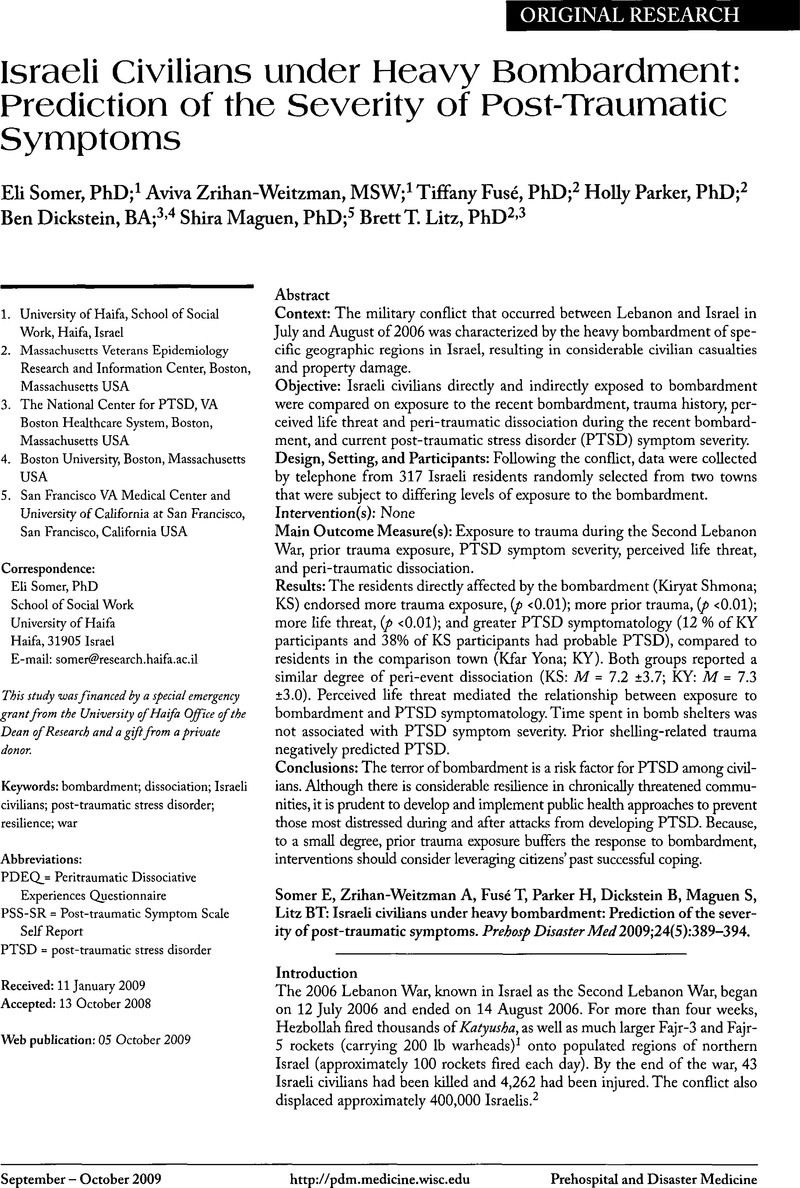13.Solomon, Z,
Laufer, A,
Lavi, T: Under the Shadow of Intifada: Exposure and Post Traumatic Reactions of Adolescents in Israel. In:
Somer, E,
Bleich, A (eds),
Mental Health in Terror's Shadow: The Israeli Experience.
Tel Aviv:
Ramot,
2005, pp
77–
110. (In Hebrew).
Google Scholar 